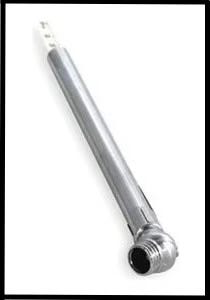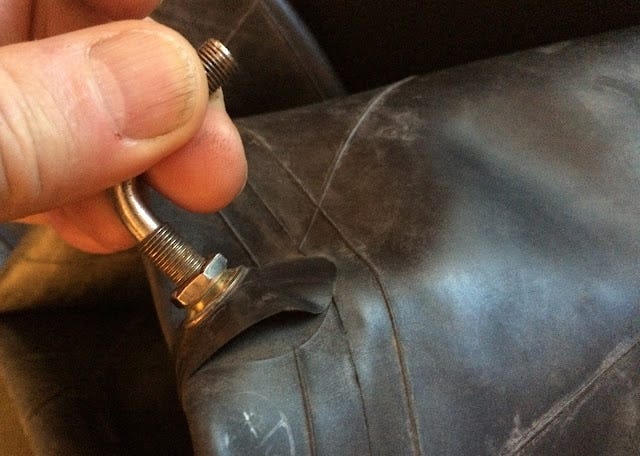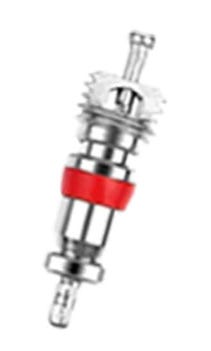This Substack is about life in Vietnam from the viewpoint of a 10-year expat who spent his first 60 years in a low-context culture.
If you come to Việt Nam or go anywhere else with even the slightest thought of renting or buying or riding a motorbike/motorcycle, take a tire pressure gauge with you.
A very good tire pressure gauge will cost you less than US$20, which is nothing compared to the safety and peace-of-mind it gives. They are NOT readily available in many developing countries. They’re findable here in Vietnam, but it’s a slog to hunt them down. When you do find one, it’s usually both cheap and inaccurate.
Tire pressure is VERY important. If it’s low, the bike will not handle properly. If it’s very low, you are chancing a blowout. In an extreme turn, the tire could also roll over enough that the rim contacts the road, likely causing you to lose control and crash.
Low pressure also affects tire wear and fuel mileage—in case those are more important to you than safety.
Tire pressure that is too high is relatively safer than too low, though you will still have negative effects on performance, handling, comfort, and tire life.
The only places I’ve seen tire pressure gauges used here in VN are at the Honda dealer’s shop and the dedicated tire shop pictured below. Most just guess by stopping when the tire’s hard.
A few years ago, the rear tire of my Honda NV400 had a s-l-o-w leak and I was topping it off every two or three days. At home, I have an electric compressor like the ones you’ll see in a repair shop. In each bike, I carry a travel compressor powered from a pigtail connected to the bike’s battery. It’s the same SAE pigtail used to charge my phone while riding.
This leak was especially frustrating because less than 400 km earlier I’d had brand new tires and tubes installed.
It took two rear tubes to repair the flat because the first one was improperly installed with a pinched tube. It went flat in less than 3 km with a big tear — tear, not a puncture.
The new slow leak was due to a bad "weld" and is irreparable.
Fortunately, most tires these days are tubeless, though a lot of us still carry a tube when riding off-road or away from what passes for civilization. In the unlikely case we get a sidewall puncture, inserting a tube will allow us to limp back to a tire shop or at least a hotel where we can wait for a tire to be shipped to us.
Click here for good information on plugging vs. patching tires, fix-a-flat, and more.
Air pressure is more important than you think
The amount of air pressure in your tire is NOT something that you or anyone else can guesstimate accurately enough. Since arriving in VN, I have had air put in my tires by numerous "mechanics". Each time, I checked the pressure less than 1 km later. In tires that call (on the sidewall) for 38 psi, the mechanic-supplied pressure ranged from 15-54 psi. The closest any of them got to 38 was 34.
Close, but no ceegar.
How long since you checked the air pressure in your tires? If it's been more than a couple weeks, get up from the computer and go check them now. Yes, even especially if you drive a car! The recommended tire pressure is on the sidewall of every tire, though cage (four-wheeled vehicle) owners should use the recommended tire pressures on the sticker inside the driver's door, usually on the B pillar (the vertical piece revealed when you open the door) unless it’s a very early model Ford Explorer, in which case add 10%. Check the cold (as in it's been sitting for at least 30-60 minutes) pressure on every tire on every vehicle and get them right.
My good friend and great mechanic, Rick, commented below something very important that I wanted to add here so all new readers see it:
A minor caution is that every time a tire is checked there is a possibility of the Schrader valve not seating well, especially if they are old or cruddy from running without caps. We learned this on truck and bus caravans where we checked every tire, every day. I spray soapy water, or use a little spittle on my finger, to check the valve after using a pressure guage. Sometimes I find loose valve cores and sometimes I find bad ones. I only buy the valve caps which have an integral valve core tool.
Rick’s advice necessitates having a few valve cores at hand.
Remember... two or four very small patches of rubber are the only contact between you and the road and between you and potential disaster. The smaller the tires, the smaller your connection to the road. For motorcycle tires, I can cover the “contact patch” that contacts the ground with the length and width of four fingers. On large SUV tires, I can cover it with my splayed hand. I wear XL gloves, so it’ll probably take more than one of your hands to cover the same area; you get the idea.
Respect your tires, keep an eye and the occasional gauge on them, and they will serve you well.
Ride safely out there!












Mr. Pearce, it is to my chagrin, disappointment and lucklessness that I missed you during your recent stateside visit. That would be the cloud. The silver-lining, however, is that your medical procedures appear to have resulted in a "Positive Health Outcome."
Now, this is where I must chide the aforementioned terminology a bit. Stick with me, because you know I am leading you down a path and you are-a-goin' whether or not you want to.
Most people that look like me, particularly males, have what are known as "Negative Health Outcomes."
Dr. NHO.
Ergo, when you so eloquently reference your doctor's words: "The tibial component is ours, but the femoral component is not" and I reflect upon the statement as a Black Man in the United States from an analogous sociopolitical, institutional, cultural, linguistic and economic standpoint it, Sir, is most profound. Given your intelligence, we would consume many libations and speak for many moons about the irony.
I am most happy that you are well and we shall break bread, again, soon.
Fortunately, my father inlaw is a motorbike mechanic and keeps the families bikes in top shape. Great advice for those without my luck!